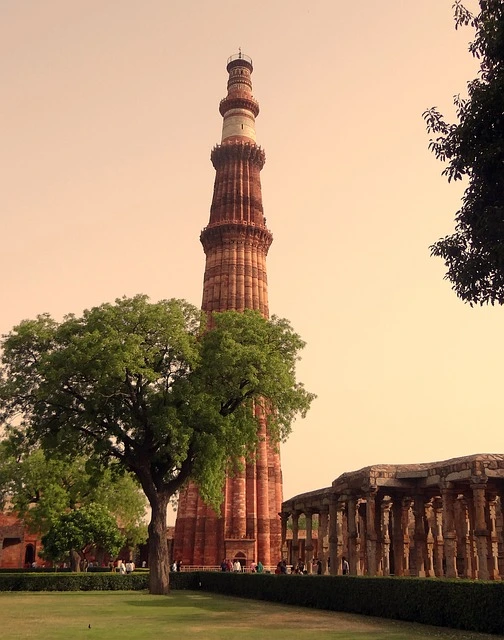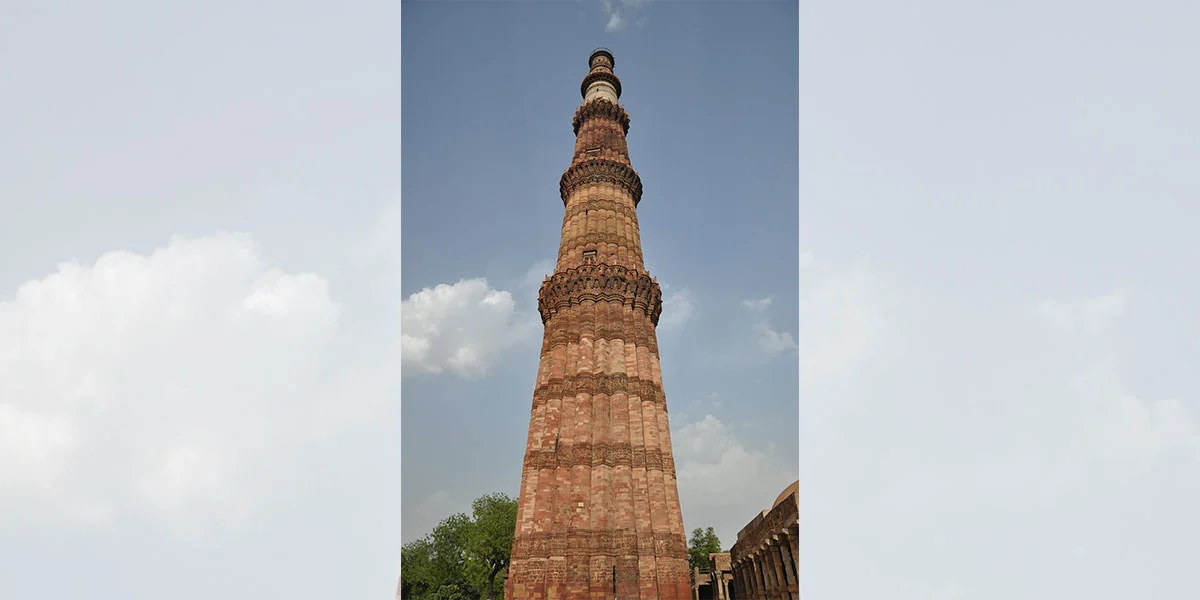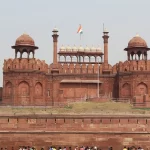Qutub Minar is a UNESCO World Heritage Site located in Delhi, India. It is a towering minaret standing at a height of 73 meters (240 feet), making it one of the tallest brick minarets in the world.
The construction of Qutub Minar was started by Qutb-ud-din Aibak, the founder of the Delhi Sultanate, in 1192 AD, and completed by his successor Iltutmish.
The minaret is built with red sandstone and marble, adorned with intricate carvings and verses from the Quran.
It consists of five distinct stories, each marked by a projecting balcony, and is surrounded by several other historically significant structures within the Qutub Complex, including the Quwwat-ul-Islam Mosque, the Iron Pillar of Delhi, and the Alai Darwaza.
Qutub Minar is not only a marvel of medieval architecture but also serves as a symbol of the rich cultural heritage of India.
It attracts a large number of tourists and visitors from around the world who come to admire its beauty and learn about its historical significance.

| Address | Seth Sarai, Mehrauli, New Delhi, Delhi 110030 |
| Opening Hours | 7:00 am to 5:00 pm |
| Closed Days | Open All Days |
| Entry Fee (Indian) | Rs. 35 |
| ntry Fee (Foreigner) | Rs. 550 |
| Nearest Metro | The Qutub Minar Metro Station on the Yellow Line is the closest, just about 2 km from the monument |
Here are some key points about it:
- Construction: Qutub Minar was commissioned by Qutb-ud-din Aibak, the founder of the Delhi Sultanate, in 1192 AD. It was initially built to celebrate the victory of Aibak over the last Hindu kingdom in Delhi.
- Architecture: The minaret is constructed primarily of red sandstone, with some marble embellishments. It stands at a height of 73 meters (240 feet) and has a diameter of 14.3 meters at its base, tapering to 2.7 meters at the top.
- Design: The tower is divided into five distinct stories, each separated by a balcony. The first three stories are made of red sandstone, while the fourth and fifth stories are made of marble and sandstone. The entire structure is adorned with intricate carvings and verses from the Quran.
- Purpose: While the exact purpose of Qutub Minar is debated among historians, it is believed to have served as a minaret for the nearby Quwwat-ul-Islam Mosque, where the muezzin would call the faithful to prayer.
- Historical Significance: Qutub Minar is not only a testament to the architectural and engineering skills of medieval India but also holds immense historical significance as one of the earliest examples of Indo-Islamic architecture in the Indian subcontinent.
- Qutub Complex: The minaret is part of the larger Qutub Complex, which includes several other notable structures such as the Quwwat-ul-Islam Mosque, the Iron Pillar of Delhi, the Alai Darwaza, and the Tomb of Iltutmish.
- UNESCO World Heritage Site: Qutub Minar, along with the surrounding Qutub Complex, was designated as a UNESCO World Heritage Site in 1993, recognizing its cultural and historical significance.
Overall, Qutub Minar stands as a symbol of India’s rich cultural heritage and attracts tourists and visitors from around the world who come to admire its beauty and learn about its history.
Other Historical Monuments





